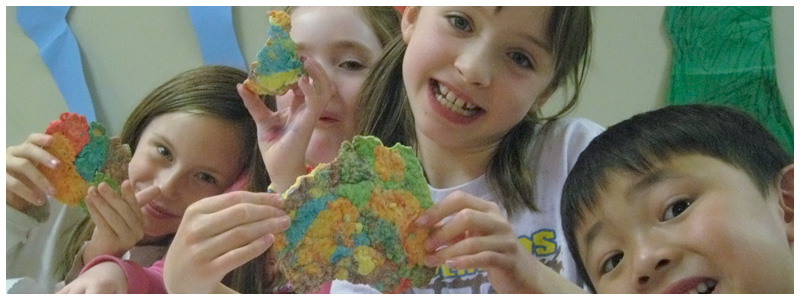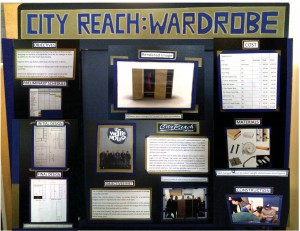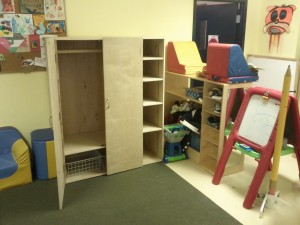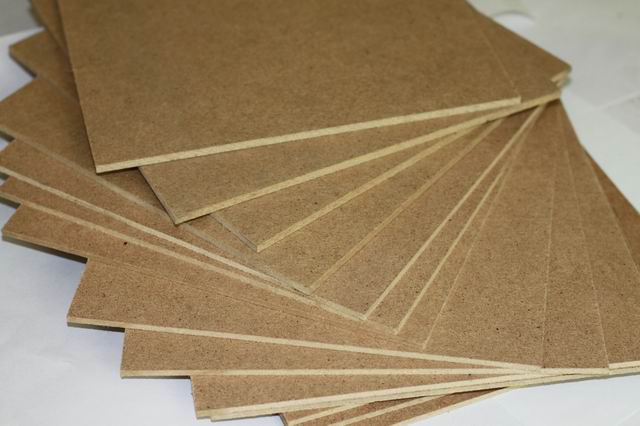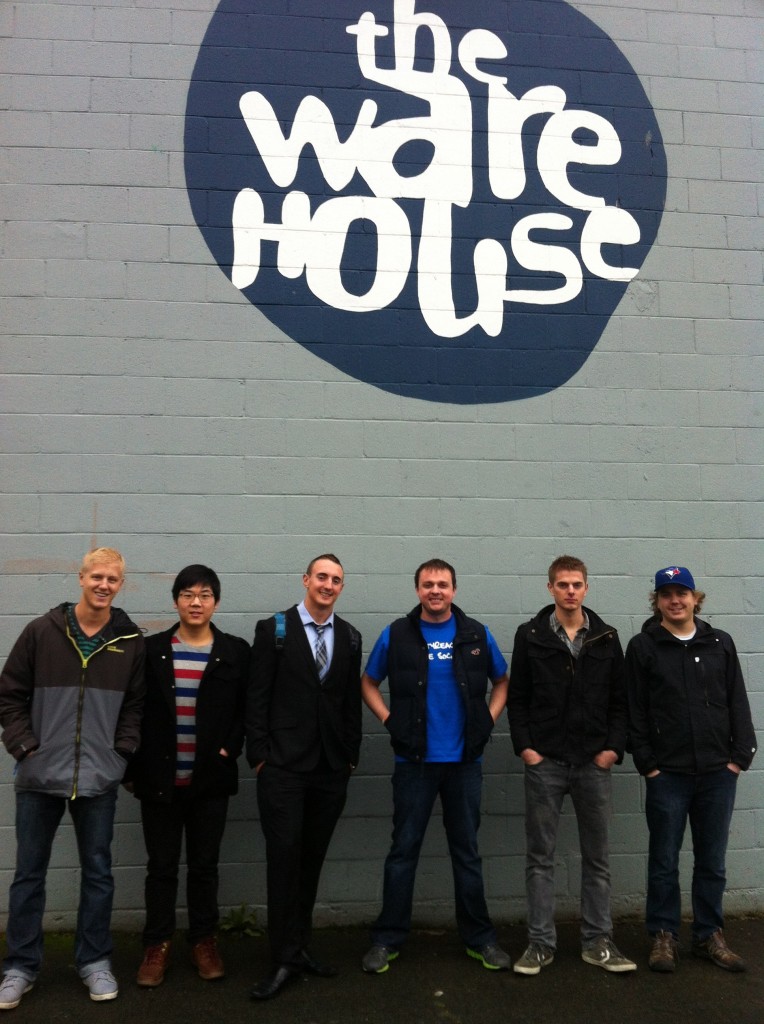Since the last blog post, our team has been hard at work with finalizing the planning and the construction of the wardrobe. The construction process has gone well and the project is near completion, with the group anticipating that we can deliver the wardrobe to CityReach next week.
The following steps have been taken over the past two weeks:
- The group had a brief meeting with Mark Daigle from UBC Plant Operations on Monday, March 11. Mr. Daigle provided valuable insight, and guided the team in the proper direction for the arrangement of the acquisition of tools as well as a work space.
- As planned, members of the team met with Dave from CityReach at Rona on March 13 to pick up the materials. All materials were acquired, and the costing met the anticipated budget.
- The materials were transported back to campus using the UBC truck, and were stored in a lab in the CEME building.
- Through correspondence with the Civil Lab Director, Mark Rigolo, the group arranged for cuts to the plywood to be made in the Rusty Hut wood shop by the trained technicians. Mr. Rigolo also arranged for a workspace for the group to assemble the project on Wednesday, March 20.
- On Monday, March 18 some members of the group measured and marked the sheets of plywood in preparation for the cuts to be made prior to Wednesday.
- The group’s safety plan was finalized on the evening of March 18, and copies were distributed to all members. The plan was written as a project specific supplement to the general guidelines presented to the group by Dr. Nesbit. All group members were familiarized with all safety procedures before construction could begin.
- The team met in CEME 1010 on Wednesday morning and assisted the wood shop technicians with carrying the plywood to the Rusty Hut, as well as with making the cuts.
- Using a cordless drill, and hand tools provided by the wood shop, the group proceeded to prepare and assemble the wardrobe in CEME 1010. The process went safely and according to plan, and by the afternoon the wardrobe was assembled with only finishing touches to be done.
- The group decided to arrange for delivery to CityReach on Wednesday, March 27 where small final touches will be made to finish the wardrobe.
The implementation of the construction plan has been successful, and the group is satisfied with the project at its current state. We are all looking forward to applying the final touches and seeing the finished project.
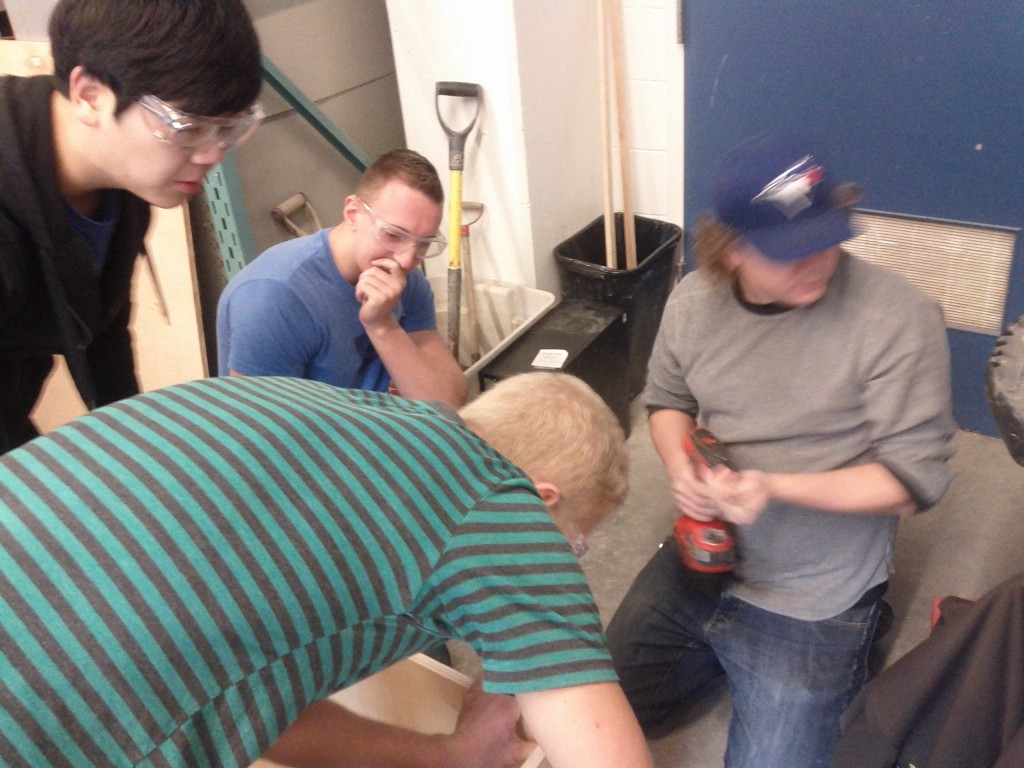
Matt, Matt, Daniel, and Geoff During the Construction Process
As with any construction project, there were a number of aspects that went according to plan, as well as those that required revision and extra attention. The cost and materials estimates were found to be accurate, with few shortages and no excess waste material. The group will likely require 5-10 additional finishing screws and a small tube of wood filler, but otherwise all of the required materials were available on the day of construction. The anticipated plans were also found to work well, as they required fewer cuts, while making the best use of the material. Waste was minimized, and the cut sheets were all exact, with allowances for the overlap of the ¾” material where needed. One aspect of the project that presented some problems was organizing a workspace. UBC is quite congested, and finding a location to store and assemble the project proved to be challenging. The group had hoped to use the competition space in the Engineering Design Centre, but we were told that there would not be adequate space. Fortunately, Mr. Rigolo was able to provide us with a suitable work and storage space as well as a means of acquiring the required tools. The safety plan was also found to be effective as all group members took the plan and the process seriously, with no incidents.
While the group was initially satisfied with the initial plans, a number of changes were made during the construction due to time constraints, or to increase the efficiency of the build or the effectiveness of the project. The group had originally planned to assemble the project at CityReach in order to provide an interactive experience for the children and to demonstrate stages of the construction process to them. Unfortunately, it was decided that the space and tool requirements were too great and it was much more efficient to do the build on campus in the event that any cuts needed to be redone or additional tools were required. We do still hope to organize a meeting with the children to show them the application of some of the finishing touches, or simply to present them with the new wardrobe. The group had also discussed the idea of painting the wardrobe with the help of the students, as another type of interactive experience but, due to time and budgetary constraints, this was found to not be feasible. There were also changes made to the actual design of the project. Firstly, the group decided to remove the drawers from the design and place baskets in the bottom of the wardrobe instead. This was found to be much more time-effective, and less costly. The construction of drawers is precise, and can be labour intensive, which could have proven problematic in our limited schedule. Also, the baskets are removable, so the children will be able to pull them right out of the wardrobe and take them over to their play area. Lastly, the group decided to change the wardrobe’s main material from 5/8” MDF to a ¾” Birch plywood. While the Birch is slightly more expensive ($5/sheet) it was deemed much more suitable for this design. The group worried that the MDF may be too heavy, and that the children may have issues opening and closing the doors of the cabinet. The birch is much lighter and has provided a much easier to handle design. The edges of the plywood also hold screws much better, as MDF is a pressboard product and screws often just pull out if a force is applied. The group also found that the birch plywood also makes for a much more aesthetically appealing product.
As a group, we feel that we can take a number of positive outcomes from this project. These include:
We were able to design and construct a functional wardrobe with hanger space, adjustable shelving, removable baskets, and magnetic doors. This will provide a clean, organized, effective means for CityReach to store their dress-up clothing.
The group gained valuable experience not available in other 2nd year Civil Engineering courses. We were given a brief introduction to small-scale project management from design, to scheduling, to estimation, to implementation. This is not consistent with the generally technical based courses in the curriculum, and we have appreciated the experience. We were also given hands-on experience with a real construction project.
The group was able to help a non-profit organization that does extensive work within the community. It has been fulfilling to work with such a great program, and to feel as though we have helped to make a difference.
Many thanks to Mark Rigolo and Mark Daigle for their assistance with this project. Their help has been invaluable, and has aided us greatly in the implementation of this project.
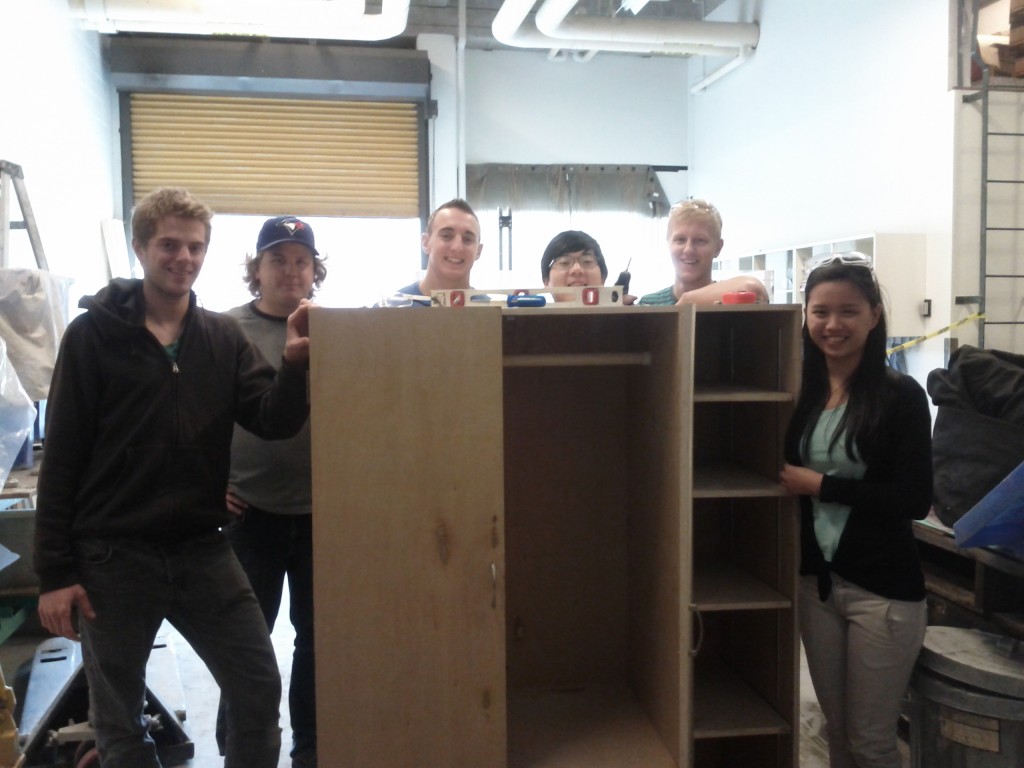
The Group with the Nearly Complete Wardrobe
We are now in the process of working on our poster to present in the Civil Design Studio on Monday, and will then complete and present the finished wardrobe to CityReach next Wednesday. The project has been fulfilling thus far, and the entire group is eagerly towards its completion.
